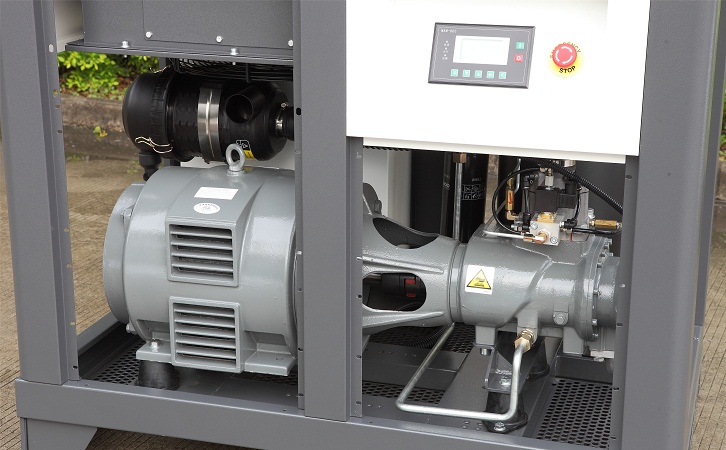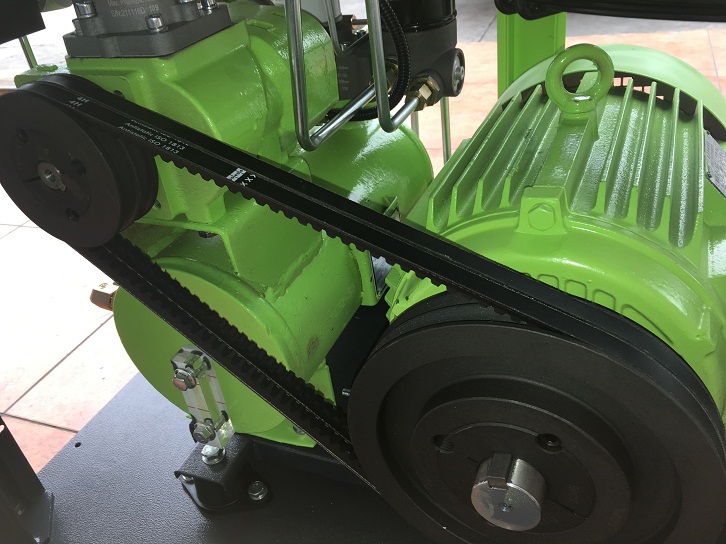When choosing the transmission system for vi̇dali hava kompresörleri̇, two main options dominate the industry: kayış tahriki ve direct (gearbox) drive. The debate over which one is superior often comes down to manufacturer design quality and application requirements. Here’s a detailed breakdown of their advantages and limitations.

⚙️ 1. Overall Efficiency
- Gear (Direct) Drive: High-quality gearbox designs can reach 98–99% efficiency.
- Belt Drive: Well-engineered belt systems can also hit around 99% efficiency under optimal conditions .
🔑 Insight: Efficiency is less about the drive type and more about the precision of manufacturer engineering.
⚡ 2. Unloaded (Idle) Power Consumption
- Gear Drive: Requires constant oil pressure (typically 2.5–4 bar) to lubricate the gearbox, even when idle—leading to higher energy usage.
- Belt Drive: Can safely run at zero pressure idle, though manufacturers often maintain ~1.5 bar for safety, reducing idle power draw by ~15%.
Örnek: A 160 kW gear-driven unit operating 1,200 unloaded hours per year consumes roughly 28,800 kWh more electricity than its belt-driven equivalent X—resulting in substantial cost savings over time.
🛢️ 3. Oil Leakage and Gearbox Integrity
In practice, loss of gearbox oil is a major risk in gear-drive compressors, leading to wear and potential failure. Belt-drive systems avoid this outright, resulting in greater reliability and reduced maintenance risk.
🎯 4. Flexible Pressure Settings
Users often have unique pressure requirements, e.g., 11–11.5 bar instead of standard 13 bar.
- Belt Drive: Simply swapping belt pulley diameters lets you match output pressure precisely—while maintaining airflow and efficiency.
- Gear Drive: Pressure adjustments are far more complex and costly due to fixed-speed gearbox ratios.
🔩 5. Simplified Pressure Adjustments
When pressure requirements change post-installation:
- Belt Drive: Adjusting pulley sizes is easy, fast, and inexpensive.
- Gear Drive: Modifying pressure settings is labor-intensive and costly.
🔧 6. Easier Bearing Replacement
- Gear Drive: Bearing replacement requires major gearbox disassembly and overhaul.
- Belt Drive: You can replace motor or rotor bearings without disturbing the gearbox—more cost-effective and quicker.

🛞 7. Quicker Shaft Seal Replacement
Routine replacement of the rotor shaft seal is much simpler in belt-drive systems. You just remove the belt pulley. Gear-drive units require disassembling the motor and coupling—requiring significantly more time and effort.
⚠️ 8. Containment of Major Failures
In gear-drive compressors, a failure of the motor or rotor bearings can damage the gearbox and other components. Belt systems isolate failures, protecting the gearbox and reducing risk of cascading damage.
🔇 9. Noise and Vibration Performance
With direct rigid coupling, vibrations from the compressor are transmitted directly to the motor bearings and gearbox, increasing noise and wear. Belt-drive systems act as vibration dampers, leading to lower noise levels and reduced bearing fatigue.
✅ Conclusion: Which System Should You Choose?
Both systems can deliver excellent performance—but when considering maintenance cost, long-term operating efficiency, flexibility, and noise, modern belt-drive systems often provide a superior total cost of ownership.
At Baldor, we offer vi̇dali hava kompresörleri̇ ile optimized belt-drive configurations, precise control over speed and pressure, enhanced reliability, and quieter operation.